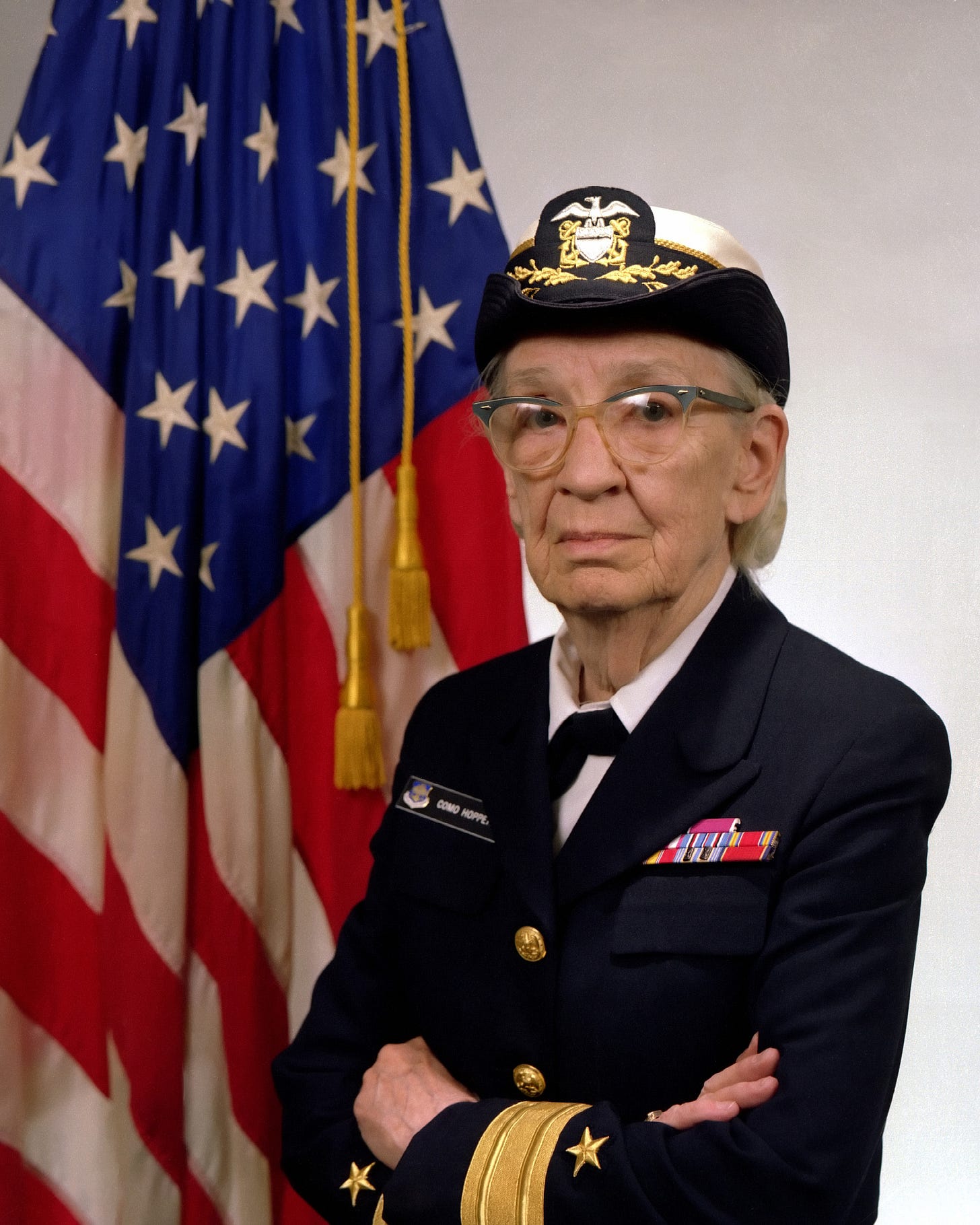TDIH: "Amazing Grace" Hopper
“If you do something once, people will call it an accident,” she once said. “If you do it twice, they call it a coincidence. But do it a third time and you’ve just proven a natural law!”
On this day in 1906, future Rear Admiral Grace Hopper is born. The feisty Navy officer has been called “Amazing Grace” because of her many accomplishments during decades of service.
You might be surprised to learn that you can credit Amazing Grace for much of the functionality in your computer. It was once thought that computers could only operate in mathematics and numbers, but Grace was convinced that computers could be programmed to respond to words, too.
This early pioneer of computer programming foresaw a world where people could use computers, even if they were not professional programmers—then she helped make it happen.
But, then again, Hopper was one who was always expecting change, innovation, and improvement. She hated to hear someone say “but that’s how we’ve always done it.”
“In the computer industry,” she explained, “with changes coming as fast as they do, you just can’t afford to have people saying that.” To make her point, she kept an unusual clock on her wall, proving things could be done differently.
The clock ran counter-clockwise.
Hopper had come a long way from her roots in New York City, where she was born in 1906. Even as a young girl, she was fascinated with gadgets and would take things apart just to see how they worked. Maybe unsurprisingly, that young girl would go on to earn a Master’s degree and a Ph.D. in mathematics, both from Yale University.
She taught mathematics for more than a decade before being sworn into the United States Navy Reserve in the wake of Pearl Harbor. Soon afterwards, she was assigned to a team at the Bureau of Ships Computation Project at Harvard University.
She was then a lieutenant, junior grade.
Hopper’s achievements in the decades that followed were numerous. She was the third programmer to work on the world’s first large-scale computer, which was known as the Mark I. “That was an impressive beast,” Hopper later remarked. “She was fifty-one feet long, eight feet high, and five feet deep.”
One funny moment during that time period led to a phrase that you have doubtless used. A moth got caught in the Mark II while Grace was working on it. Thus, she had to “debug” the computer. The remains of that moth can still be found at the Smithsonian Institution’s National Museum of American History in Washington, D.C.
But that was just the beginning of Hopper’s accomplishments. She helped create a compiled computer language known as COBOL. By 1952, she had an operational compiler, but “[n]obody believed that,” she joked. “I had a running compiler and nobody would touch it. They told me computers could only do arithmetic.”
Her resume seems endless, but perhaps the most amazing thing about Amazing Grace was her perseverance and determination. As a woman, she had to prove herself repeatedly. “If you do something once, people will call it an accident,” she once said. “If you do it twice, they call it a coincidence. But do it a third time and you’ve just proven a natural law!”
With such an attitude, perhaps you won’t be surprised to hear that former Senior Vice President of Apple Computer Jay Elliot once described Hopper as “‘all Navy,’ but when you reach inside, you find a ‘Pirate’ dying to be released.”
Hopper passed away nearly three decades ago, but she leaves a legacy in the young people that she taught.
“The most important thing I’ve accomplished,” she said, “other than building the compiler, is training young people. They come to me and say, ‘Do you think we can do this?’ I say, ‘Try it.’ And I back ‘em up. They need that. I keep track of them as they get older and I stir ‘em up at intervals so they don’t forget to take chances.”
In honor of Hopper’s memory, perhaps today is a good day to challenge yourself or take a chance on something new.
Sources can always be found on my website, here.



Wow! Amazing Grace Hopper indeed. I am an old Navy man who never knew of Admiral Hopper before now. She must have been such an inspiration to everyone she contacted. A computer genius born nearly 120 years ago. Everyone should thank her for her contributions to the device that they are using at this time. Thank you Tara.
Love this story.